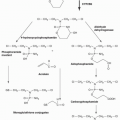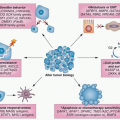Syndrome |
Acronym |
Gene(s) |
Phenotype |
RCC Type |
Genetic Testing Sensitivity |
von Hippel-Lindau syndrome |
VHL |
VHL |
Hemangioblastoma (cerebellum, spine, retina), pheochromocytoma, papillary cystadenoma (pancreas, epididymis, adnexal organs, endolymphatic sac pancreatic NET, and cysts) |
Clear cell |
Nearly 100%a |
Birt-Hogg-Dubé syndrome |
BHD |
Folliculin, FLCN |
Fibrofolliculoma, trichodiscoma, acrochordon, lung cysts, spontaneous pneumothorax |
50% chromophobe/oncocytic hybrid, 34% chromophobe, 9% clear cell, 5% oncocytoma, 2% papillary |
˜88%20 |
Hereditary leiomyomatosis and RCC |
HLRCC |
FH |
Cutaneous leiomyoma, uterine leiomyoma |
Papillary type 2 |
˜93%25 |
Hereditary papillary RCC |
HPRCC |
MET |
No additional features |
Papillary type 1 |
Not well established as families are rare |
Hereditary paraganglioma/pheochromocytoma |
HPGL |
SDHB, possibly SDHD and SDHC |
Pheochromocytoma and paraganglioma |
Not well defined, but clear cell and papillary types reported |
Unknown in families with RCC and no paraganglioma or pheochromocytoma |
RCC, renal cell carcinoma; NET, neuroendocrine tumor. |
a Stolle C, Glenn G, Zbar B, et al. Improved detection of germline mutations in the von Hippel-Lindau disease tumor suppressor gene. Hum Mutat 1998;12:417-423. |







